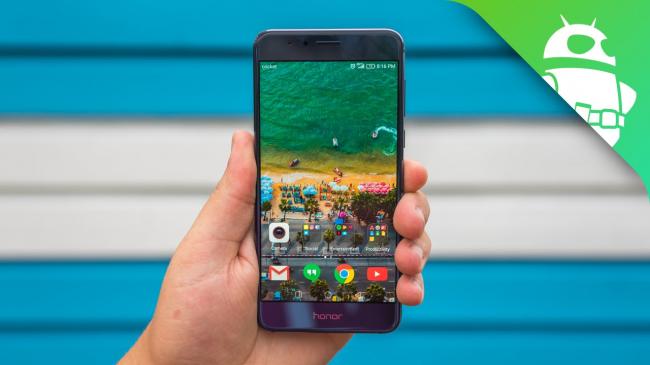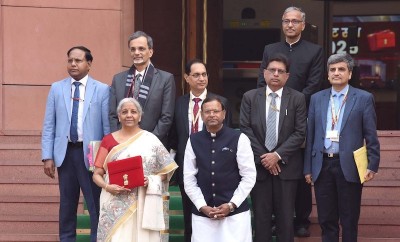
Global smartphone production volume may decline by up to 5 per cent in 2019: TrendForce
Seoul, Jan 15 (IBNS): Global smartphone production volume for 2019 is expected to be 1.41 billion units, a decrease of 3.3% compared with 2018, according to the latest report by market research firmTrendForce.
Brands would record lower production volumes this year because the overall demand outlook in the global smartphone market remains weak.
The lack of breakthrough features or specs has made the consumers less active than before with respect to replacing their existing devices.
If the demand outlook becomes worse, together with uncertainties and impacts from the U.S.-China trade war, the decline in global smartphone production may reach 5% in 2019.
As for the global ranking of smartphone market share, Samsung would remain the market leader, while Huawei is expected to surpass Apple to become the world's second largest smartphone maker.
Apple would then take the third place:
TrendForce notes that Samsung produced 293 million smartphones in 2018, a YoY decline of 8%. Its market share has been shrinking as well.
While Chinese brands actively explore lower end and emerging overseas markets, it is relatively difficult for Samsung to develop new business fields, because it has already had a complete deployment in the low-, middle- and high-end segments.
Moreover, Samsung has involved in fierce price competition with China’s domestic brands, so it would adopt more aggressive strategies this year in terms of specifications and pricing to compete with its Chinese rivals. For 2019, Samsung still aims to maintain its existing market share while actively exploring emerging markets. It is expected to remain the leading smartphone maker worldwide with a global market share of 20%.
Apple’s production volume continues to drop due to headwinds from high price tags and sales ban
Huawei’s production volume increased by 30% YoY to 205 million units in 2018, taking advantages of its comprehensive product range and self-developed chips.
With its P series and Mate series, Huawei has expanded its share in the premium segment of the Chinese smartphone market, where Apple used to dominate. Huawei has also successfully presented its brand in overseas markets like East Europe with its Honor models.
Looking ahead to 2019, Huawei would retain its position in the Chinese smartphone market, while focusing on the expansion in emerging markets such as Eastern Europe, Brazil, and South America.
According to TrendForce, Huawei has a chance to produce 225 million smartphones in 2018, with a global market share of 16%, overtaking Apple to become the world's second largest smartphone brand.
However, as China's largest mobile phone brand, Huawei may be more vulnerable to the looming U.S.-China trade war, so it remains to be seen whether the company’s smartphone production and shipment would be affected.
As for Apple’s performance in 2018, its total production volume for 1H18 was roughly the same as for 1H17.
However, the sales of new iPhones turned out to fall short of expectation, resulting in lower shipments of iPhones in 2H18, about 7% less than in 2H17. As the result, the production volume of Apple in 2018 declined by 3% YoY.
Particularly, Apple’s shipment in the Chinese market last year was 10 million units less than in 2017, due to the ban on the sale of some iPhone models and the high pricing of the new iPhones.
Going forward to 2019, Apple will continue to face the longer replacement cycle of smartphones and its weakening sales in the premium segment of the Chinese market. Furthermore, it is also a challenge for the brand to balance the profitability and pricing strategies to boost sales. As the result, Apple’s production volume for 2019 would decrease to 189 million units, with the market share to reach 13%, down from 15% in 2018. If the tension in US-China trade becomes worse this year, Apple’s production volume may decline further.
Chinese smartphone brands are faced with more acquisitions; gaps between top global smartphone brands’ become smaller in terms of market share
Xiaomi, OPPO, and Vivo would retain the fourth, fifth and sixth position respectively in the global smartphone brand ranking for 2019, the same as 2018.
Xiaomi maintains the strategy of low gross margin, building an ecosystem with cost effective products and services. It registered 123 million units in smartphone production for 2018, 32% more than that for 2017.
For 2019, Xiaomi would continue to focus on research and development, aiming to renew its brand image with more advanced technology, especially with new positioning for its sub-brands including Xiaomi, Redmi, Blackshark, POCO, and cooperation with Meitu.
In terms of overseas business, Xiaomi would continue to strengthen its competitiveness in European and Indian channel markets. Xiaomi’s smartphone production for 2019 is expected to be 129 million units, says TrendForce.
OPPO and Vivo, ranking the fifth and sixth, have turned to explore overseas business opportunities due to the saturation of the Chinese smartphone market. OPPO has launched Realme, an online brand, in Indian market; Vivo has signed a six-year sponsorship agreement with FIFA World Cup to enhance its international popularity.
However, for OPPO and Vivo, about 70% of their revenues are still generated from the Chinese market, so the looming outlook of China's economic situation in 2019 would have relatively great impacts on the two brands. In terms of their respective performances, OPPO registered a production volume of 120 million in 2018, and aims to keep the volume flat in 2019, with an estimated market share of 8%.
In contrast, Vivo, whose overseas business contributes less to its total sales, produced a total of 104 million smartphones in 2018. In 2019, the volume would fall to less than 100 million, which represents a global market share of 7%.
TrendForce notes that a number of Chinese smartphone brands have closed down or been acquired in 2018. Amid the demise of these smaller brands, the major brands in the smartphone industry have continued to expand.
Throughout 2019, smartphone brands would be more struggling to differentiate their new products, and the gaps between market shares of the world’s top six smartphone makers would be smaller.
As the looming U.S.-China trade war brings more uncertainties, it remains to be seen whether the landscape in the global smartphone market will undergo more changes.
Support Our Journalism
We cannot do without you.. your contribution supports unbiased journalism
IBNS is not driven by any ism- not wokeism, not racism, not skewed secularism, not hyper right-wing or left liberal ideals, nor by any hardline religious beliefs or hyper nationalism. We want to serve you good old objective news, as they are. We do not judge or preach. We let people decide for themselves. We only try to present factual and well-sourced news.







